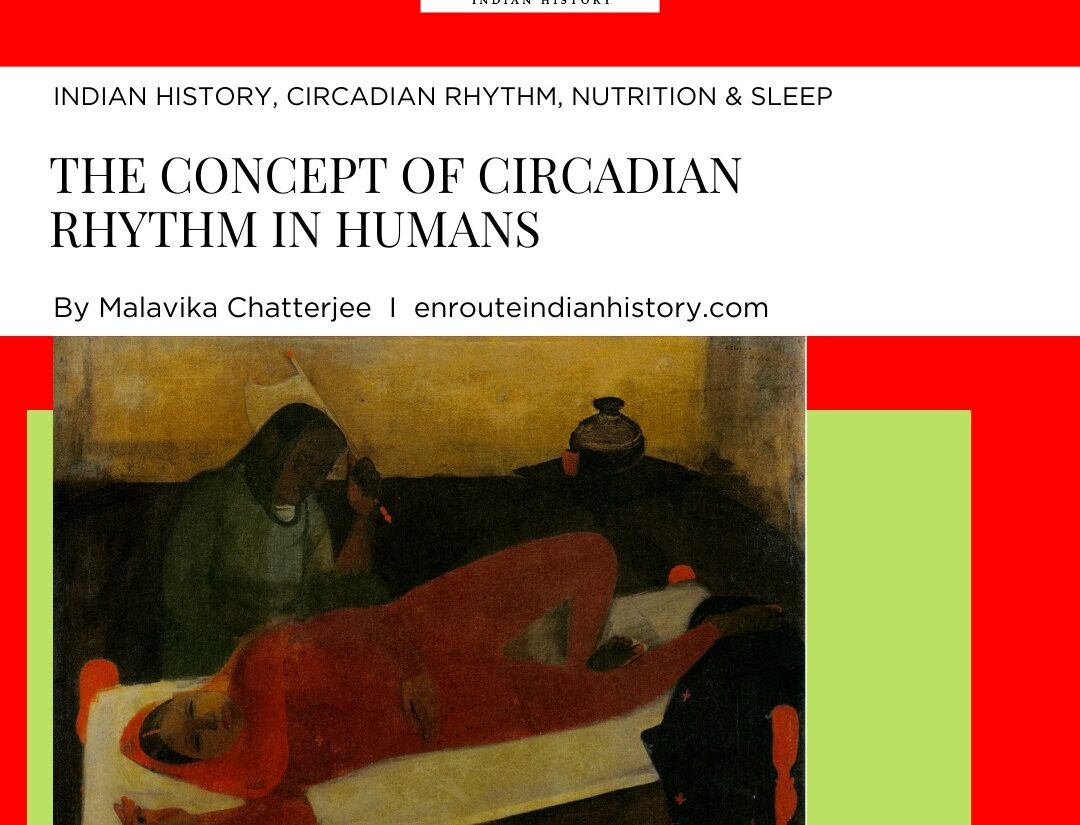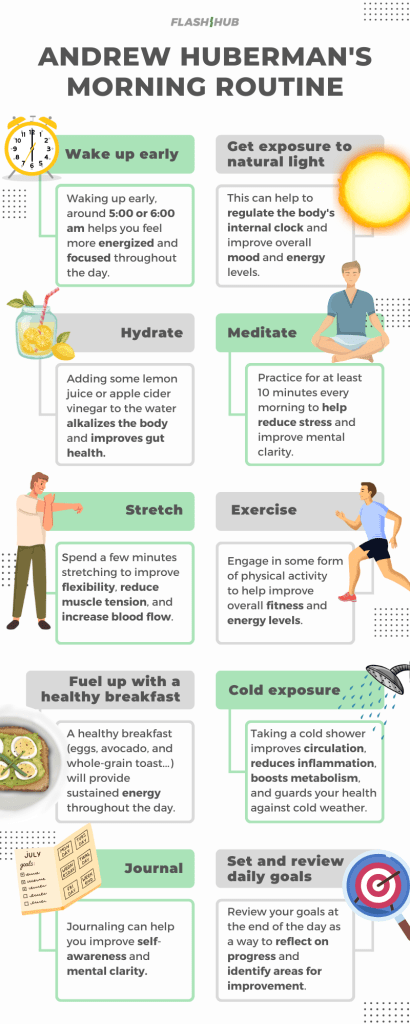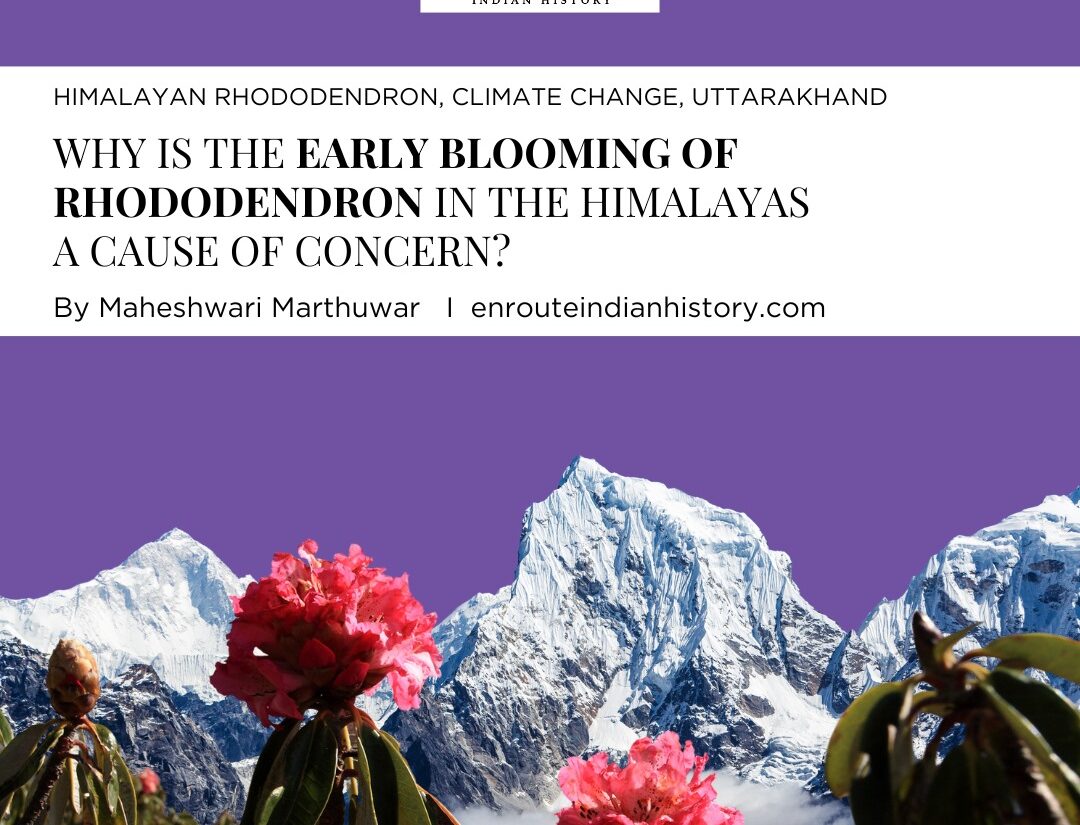
Circadian Rhythm is an inherent day-night cycle in all living organisms directly related to the rotation of the Earth. Biologically, we are aligned to a 24-hour cycle, rising with the sun and sleeping at night. Other factors like food and water intake, mental health, temperature and other environmental stimuli, to name a few, also affect one’s circadian clock. However, light and a lack thereof are significant factors controlling our circadian rhythm.

Our 24-hour Biological Clock
The concept of circadian rhythm was first introduced in the scientific community in the early 1700s (Huang 2018). According to Huang (2018), all life forms have an ever-present circadian clock indicative of an “evolutionary advantage to anticipate and adapt” to external stimuli. In most humans (sighted), the circadian clock is estimated to be between 24.1 and 24.2 hours (Czeisler et al. 1999). Light and Dark are the key factors affecting the circadian rhythm in humans. These days, the ‘circadian rhythm’ is a common phrase used by experts in the health and wellness community, like the internet’s favourite neuroscientist, Andrew Huberman. A professor at Stanford University School of Medicine, he reintroduced the importance of the circadian rhythm through his well-known podcast Huberman Lab and his widely popular ‘morning routine’.

Brahma muhurtha
Daily exposure to natural light, specifically morning light, is highly beneficial for humans to function optimally and regulate our circadian rhythm throughout the day. However, there’s a short period before sunrise that we generally refer to as Dawn, which is considered auspicious. This time frame is known as the Brahma muhurtha. In traditional Hindu customs, Muhurta or muhurtha (48 minutes) signifies the auspicious time, ideal for carrying out any tasks, ceremonies, or customs. Therefore, Brahma muhurtha, the time of Brahma or the ‘Creator’s Hour’, is 48 minutes long. During this period, yogis begin their daily practice with Suryanamaskar or sun salutations. But what makes this such an ideal time?
Brahma muhurtha is the penultimate period of the night (there are 15 periods or muhurta for the night), approximately 96 minutes before sunrise (see Uma et al. 2013). Ayurveda propounds a healthy lifestyle with a systematic morning routine or Dinacharya (daily regimen). It begins with Brahma muhurtha uttana, followed by Danta dhavana (brushing teeth), Nasya (clearing nasal passage), Anjana (eye therapy), Abhyanga (oil massage), Vyayama (exercise) and Snana (bath). Brahma muhurta is associated with Brahma, the God of Creation, and as an extension, knowledge. Therefore, this period is ideal for introspection, reading, meditation, and light exercising, another way to recreate yourself, all whilst aiding your circadian rhythm.
Essential Hormones
Ideally, one must sleep early and well to reap the benefits of waking up at this time, for this is paramount for the routine to be effective. Optimal sleep affects one’s melatonin production, which naturally reduces as a response to darkness, while “regulating circadian rhythms and helping us to fall and stay asleep” and light is the most dominant “synchroniser of melatonin production” (Challet and Mendoza 2010; Peuhkuri et al. 2012). However, exposure to artificial light at night (ALAN) would disrupt this natural bodily function (Y.M. Cho et al. 2015).
Similarly, serotonin, the “feel-good” chemical of the body, also affects one’s sleep cycles. Studies show that exposure to sunlight increases serotonin levels (see Lambert et al. 2002). Moreover, if the quality of sleep is affected or there is a lack thereof, this could drastically affect one’s mental health (e.g. Meyer et al. 2024; Gagné et al. 2010). Another essential hormone that many know as the “happy hormone” is Dopamine. To put it crudely, it gets stimulated when one is happy. Research has shown (e.g. Tsai et al. 2011) that exposure to sunlight can increase dopamine levels as well as nearly 50% increase in circulating cortisol and epinephrine, according to Huberman. So overall, Vitamin D is an essential supplement to regulate hormones directly affecting one’s sleep and mental health.
Wrong Light, Wrong Time
Blue light has rapidly become the bane of our existence. Too much of it and everything goes for a toss, be it your skin (yes, blue light can affect one’s skin according to Suitthimeathegorn et al. 2022), sleep, and as its extension, digestion, mood and mental health. But how bad is it (see Wong and Bahmani 2022 for a review)? Despite its unpopular reputation, blue light helps regulate our circadian rhythm and is perfect for firing our neurons to stay alert throughout the day (Wahl et al. 2019; Münch et al. 2016). However, interaction with this particular wavelength can impact your circadian rhythm when trying to wind down (see Zhao et al. 2018). Instead of eliminating this or other wavelengths of light from your life, try minimising their consumption. Huberman rightly says that when people complain of headaches at work, it’s not because of the blue light specifically but due to staring into screens for a prolonged duration. An easy fix would be periodical breaks, staring at objects that are far away, or even short walks in your workspace.
More importantly, the adverse effect of artificial light and light pollution, in general, has severely impacted human health (Chepesiuk 2008). Therefore, prioritising reduced exposure to artificial light in general should be paramount. A simple act of dimming the lights in the evening will help you regain circadian control. Moreover, Blue light glasses can be used, especially for shift workers with heavy night-time electronic device use (see Zhao et al. 2018). If there is difficulty accessing morning sunlight, some devices can assume the role of morning light simulators to kickstart your circadian rhythm and regulate hormones.
Your Ideal (Huberman) Morning Routine
As mentioned, Ayurveda prescribes all necessary aspects of the Dinacharya or the ideal morning routine. When you look at Andrew Huberman’s scientifically backed and popular morning routine (Maximizing Productivity, Physical & Mental Health with Daily Tools – Huberman Lab), you will see certain similarities (Andrew Huberman’s Daily Routine).
He typically wakes up early, between 6:00-7:00 am, with or without an alarm. He suggests writing down or tracking your daily wake-up time to record your ‘temperature minimum’. Temperature minimum is the lowest body temperature generally observed 2 hours before your wake-up time. According to Huberman, one can habituate waking up early and consistently if exposed to natural sunlight within a few hours of their temperature minimum. So naturally, the second step in his routine is to step outside and get exposure to natural light. He does this by walking his dog and doing nothing too strenuous. He asserts the importance of forward ambulation (forward movement like walking) and the consequent optic flow (i.e. seeing things pass by you in your peripheral vision) that reduce anxiety levels.

Huberman advises to spend some time in the sun, anywhere between 10-30 minutes or more, depending on the intensity of sunlight, your mood or other mitigating factors. The following steps to his routine include morning hydration with little sea salt, delayed caffeine consumption, meditation, stretching and exercise, liquid fasting until early afternoon followed by a hearty meal, cold exposure therapy, journalling, and finally, setting and reviewing his daily goals.
Key Takeaways
In many research papers on Yoga and allied fields, Brahma muhurta is the ideal time to wake up due to the clean air of dawn. Although there is no scientific proof of higher oxygen levels during this period (the opposite holds with the lowest oxygen levels in the atmosphere during dawn), people often feel a sense of calm during the early hours of the morning. Various factors can cause this sensation, including the lack of noise. Therefore, waking up to a serene atmosphere devoid of city noises is motivating. Sunlight is the elixir of life, and as we have seen, quite literally. However, sunlight exposure, like all good things, should be done in moderation and gradually, as sleep or a lack of it is the second most important factor affecting our circadian rhythm. Exposure to light at the right time and proper nutrition are key ingredients for a good night’s sleep.

But what about those nocturnal beings? Night owls, who prefer the calm and still of the night, are essentially ‘misaligned’ with their circadian clocks and could be more susceptible to poor mental health (Loughlin et al. 2021). Although this is a genetic predisposition (Kalmbach et al. 2017), there are ways to ‘hack’ your morning routine for an overall healthy lifestyle. Research shows that waking up an hour earlier than your usual time can help fight depression (see Daghlas et al. 2021). Huberman recommends a delayed caffeine consumption by at least 90-120 minutes from your wake-up time for a “consistent arc of energy throughout the day”. Additionally, creating the right home environment and prioritising optimal nutrition and sleep will go a long way towards a healthy lifestyle. One must remember that circadian rhythms are not just about our sleep cycle but also how we regulate hormones, respond to temperature fluctuations and digest food (NIGMS 2023).
References:
Casanova, F., Jones, S. E., Hagenaars, S. P., Beaumont, R. N., Freathy, R. M., Watkins, E. R., Vetter, C., Rutter, M. K., Cain, S. W., Phillips, A. J., Windred, D. P., Wood, A. R., Weedon, M. N., & Tyrrell, J. (2021). Using Mendelian Randomisation methods to understand whether diurnal preference is causally related to mental health. Molecular Psychiatry, 26(11), 6305-6316. https://doi.org/10.1038/s41380-021-01157-3
Challet, E., & Mendoza, J. (2010). Metabolic and reward feeding synchronises the rhythmic brain. Cell and tissue research, 341(1), 1–11. https://doi.org/10.1007/s00441-010-1001-9
Chepesiuk, R. (2008). Missing the Dark: Health Effects of Light Pollution. Environmental Health Perspectives, 117(1), A20. https://doi.org/10.1289/ehp.117-a20
Czeisler, Charles & Duffy, Jeanne & Shanahan, Theresa & Brown, Emery & Mitchell, Jude & Rimmer, David & Ronda, Joseph & Silva, Edward & Allan, James & Emens, Jonathan & Dijk, Derk-Jan & Kronauer, Richard (1999). Stability, Precision, and Near-24-Hour Period of the Human Circadian Pacemaker. Science. 284. 2177-2181. 10.1126/science.284.5423.2177.
Czeisler, C. and Gooley, J. (2007). Sleep and Circadian Rhythms in Humans. Cold Spring Harbor symposia on quantitative biology. 72. 579-97. 10.1101/sqb.2007.72.064
Daghlas, I., Lane, J. M., Saxena, R., & Vetter, C. (2021). Genetically Proxied Diurnal Preference, Sleep Timing, and Risk of Major Depressive Disorder. JAMA psychiatry, 78(8), 903–910. https://doi.org/10.1001/jamapsychiatry.2021.0959
Gagné AM, Bouchard G, Tremblay P, Sasseville A, Hébert M. (2010). When a season means depression. Med Sci (Paris). 26(1):79-82. doi: 10.1051/medsci/201026179.
Huang RC. The discoveries of molecular mechanisms for the circadian rhythm: The 2017 Nobel Prize in Physiology or Medicine. Biomed J. 2018 Feb;41(1):5-8. doi: 10.1016/j.bj.2018.02.003. Epub 2018 Mar 29. PMID: 29673553; PMCID: PMC6138759.
Kalmbach, D. A., Schneider, L. D., Cheung, J., Bertrand, S. J., Kariharan, T., Pack, A. I., & Gehrman, P. R. (2017). Genetic Basis of Chronotype in Humans: Insights From Three Landmark GWAS. Sleep, 40(2). https://doi.org/10.1093/sleep/zsw048
Lambert, G. W., Reid, C., Kaye, D. M., Jennings, G. L., & Esler, M. D. (2002). Effect of sunlight and season on serotonin turnover in the brain. Lancet (London, England), 360(9348), 1840–1842. https://doi.org/10.1016/s0140-6736(02)11737-5
Meyer, N., Lok, R., Schmidt, C., Kyle, S. D., McClung, C. A., Cajochen, C., Scheer, F. A., Jones, M. W., & Chellappa, S. L. (2024). The sleep–circadian interface: A window into mental disorders. Proceedings of the National Academy of Sciences, 121(9), e2214756121. https://doi.org/10.1073/pnas.2214756121
Münch, M., Nowozin, C., Regente, J., Bes, F., De Zeeuw, J., Hädel, S., Wahnschaffe, A., & Kunz, D. (2016). Blue-Enriched Morning Light as a Countermeasure to Light at the Wrong Time: Effects on Cognition, Sleepiness, Sleep, and Circadian Phase. Neuropsychobiology, 74(4), 207–218. https://doi.org/10.1159/000477093
Peuhkuri, K., Sihvola, N., & Korpela, R. (2012). Dietary factors and fluctuating levels of melatonin. Food & Nutrition Research, 56. https://doi.org/10.3402/fnr.v56i0.17252
Suitthimeathegorn, O., Yang, C., Ma, Y., & Liu, W. (2022). Direct and Indirect Effects of Blue Light Exposure on Skin: A Review of Published Literature. Skin pharmacology and physiology, 35(6), 305–318. https://doi.org/10.1159/000526720
Tsai, H., Chen, K. C., Yang, Y. K., Chen, P. S., Yeh, T. L., Chiu, N. T., & Lee, I. H. (2011). Sunshine-exposure variation of human striatal dopamine D2/D3 receptor availability in healthy volunteers. Progress in Neuro-Psychopharmacology and Biological Psychiatry, 35(1), 107-110. https://doi.org/10.1016/j.pnpbp.2010.09.014
Uma, Y. M., K Pratibha and S Chiplunkar. (2013). A Review on impact of Brahma-muhurta on attitude of Yoga in the life style disorder: Diabetes mellitus. International Journal of Yoga and Allied Sciences 2(2) (ISSN: 2278-5159).
Wong, N. A., & Bahmani, H. (2022). A review of the current state of research on artificial blue light safety as it applies to digital devices. Heliyon, 8(8). https://doi.org/10.1016/j.heliyon.2022.e10282
YongMin Cho, Seung-Hun Ryu, Byeo Ri Lee, Kyung Hee Kim, Eunil Lee & Jaewook Choi (2015): Effects of artificial light at night on human health: A literature review of observational and experimental studies applied to exposure assessment, Chronobiology International, DOI:10.3109/07420528.2015.1073158
Zhao, C., Zhou, Y., Tan, G., & Li, J. (2018). Research progress about the effect and prevention of blue light on eyes. International Journal of Ophthalmology, 11(12), 1999-2003. https://doi.org/10.18240/ijo.2018.12.20
Circadian Rhythms.
Huberman Lab
Maximizing Productivity, Physical & Mental Health with Daily Tools – Huberman Lab
Andrew Huberman’s Daily Routine
meditationsphere.com/brahma-muhurta/
10 Reasons to Get Up Early — Because Early Rising Isn’t Just for Birds
- May 15, 2024
- 6 Min Read























